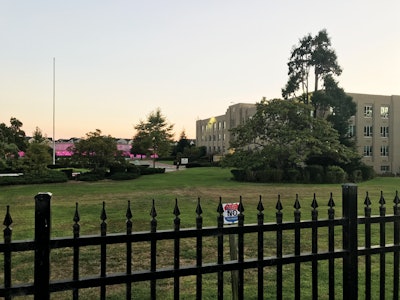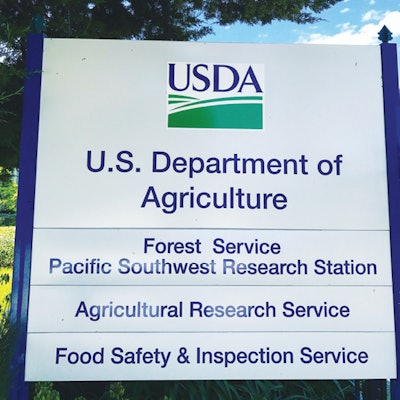
Editor’s note: This is part II of a two-part series of “Tomorrow in Cannabis” about myths in cultivation. To read more about misconceptions in cultivation, visit bit.ly/myths-part-one.
A few years ago, a friend from Colorado made the claim that roadside maintenance crews in the state regularly released broad and russet mites on roadsides to control invasive plant species such as star thistle, and that he believed this activity was responsible for the explosion and proliferation of these pests in the Colorado cannabis industry.
When I questioned where he received this information, he replied that he had “heard it from a friend.” While I dismissed the notion as mere rumor (I didn’t believe anyone would purposely release such an invasive plant pest into the environment), rumors had spread, as they often can in this industry—which lacks cannabis-specific university research—and years later, others in the cannabis community on Instagram and other cultivation communication channels were citing this flawed statement as fact.
One research paper, “Enhanced Biological Control of Yellow Star Thistle & Tumbleweed,” published by the State of California Department of Transportation (2006), proves that the mites suggested to control the invasive species on Colorado highways are indeed not the ones my friend had mentioned.
Coincidentally, the laboratory that had performed the study is part of the U.S. Department of Agriculture’s (USDA) operations, and is also located close to my house, so I decided to investigate further and paid the lab a visit.
I requested from the receptionist the contact information of a researcher there to inquire about the study, which she provided. After a few emails back and forth with the researcher, he clarified that while those mites (which, again, were neither broad nor russet mites) were being studied, no mites whatsoever have actually been approved for use in highway invasive species control in California nor any neighboring state.
All it took was a quick email exchange with a researcher to acquire this information. Unfortunately, after I clarified who I was and that I was requesting the clarification for the cannabis industry, communication from the USDA researcher stopped (and therefore I’ll withhold his name to protect his privacy)—so a tip I learned from my experience is to hold off mentioning involvement with cannabis to federal government-funded researchers. It seems to confuse the issue, even though I was looking for information on insects, not marijuana!

How We Can Move Forward
Fact-over-fiction has never been more salient in respect to chemical contamination and the emerging legal cannabis market in California (as well as the addition of states that are joining our industry medically and/or recreationally).
The highway insect misunderstanding also made me question today’s illicit practices of utilizing Myclobutanil as a fungicide and method of control for powdery mildew. Steep Hill Labs recently reported that 86 percent of the cannabis in California failed testing, and a large percentage of the failure has been attributed to Myclobutanil, which has been shown to be systemic. Questions that we, as cannabis industry professionals, need to be asking include:
- How long does it stay in the plant?
- At what rate does it deplete?
- How many generations of clones taken from applied plants will test positive at what ppm (parts per million)?
- If applied to a plant, and run-off from foliage contaminates the soil or media, will unapplied plants fail testing because they metabolized the chemical from the re-used soil?
- Will the seeds of a chemical applied plant test positive, and for exactly for how long?
It seems to me that there’s more of a focus on how to eliminate the chemical from distillates rather than any of the aforementioned questions, which strikes me as odd.

Nonetheless, factual and relevant research must be rapidly performed and the above questions answered before the industry can advance. This is not a time for misinformation; those days will be over Jan. 1, 2018, when the sixth-largest economic powerhouse in the world (California) begins legal production of cannabis in a limited capacity. In 2023, the “limited capacity” becomes “unlimited” in regard to the amount a company can cultivate. From then on, it will be a dual market with large-scale, as well as craft/boutique-grown cannabis.
Recently, a San Francisco newspaper published a front-page story that read “Pesticides hinder pot crop’s move to farmland” in its headline. The article stated that chemical or pesticide drift from neighboring farms (blueberries and broccoli) was responsible for contamination of cannabis crops. The article made the claim that the move from “clandestine to conventional” cannabis cultivation may be difficult if cultivations are located near other agricultural crops. More issues like these will arise, especially in states with larger produce output, such as California.
Again, our industry’s resulting reactions to these scenarios must be guided by science, not speculation. We must move forward with the mindset of, “If it is a fact, prove it.” Then proceed accordingly, whether by legal means, a simple conversation with a neighbor, or by taking action in your business decisions—such as designing your facility with proper filtration and decontamination as a means to combat potential unwanted pesticide issues, for example.
On that note, I fully intend to send (in a respectful manner) a copy of my book and this column to the gentleman at the USDA, explaining that cannabis is (and has been) California’s No. 1 cash crop for 30 years, and the mass legalization of cannabis in multiple states is inevitable and has already taken place.
Myself, along with other federal taxpayers who fund these laboratories and research projects will someday demand what they paid for and deserve in regards to the federal government’s approach to cannabis research and study. I don’t expect to change a thing in this moment, but as the industry progresses and becomes legitimized federally, there will be no restrictions on such an entity to perform real-world research and study for the betterment of all.
























